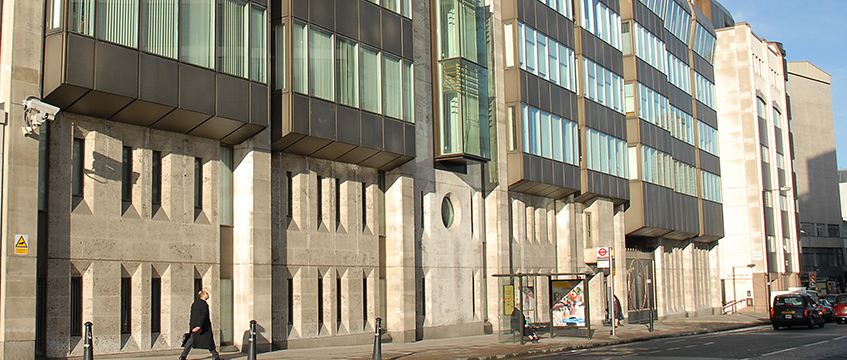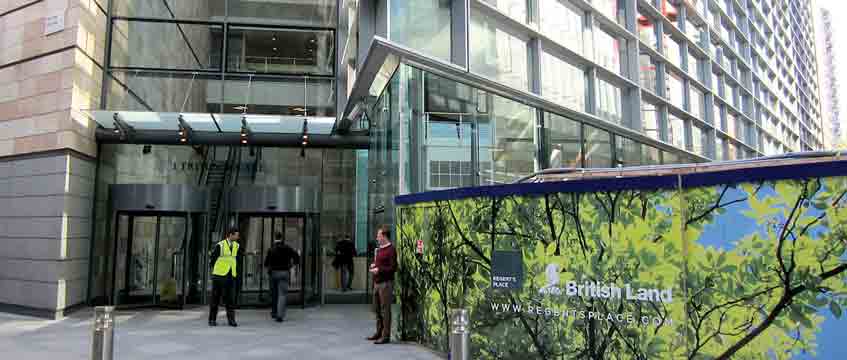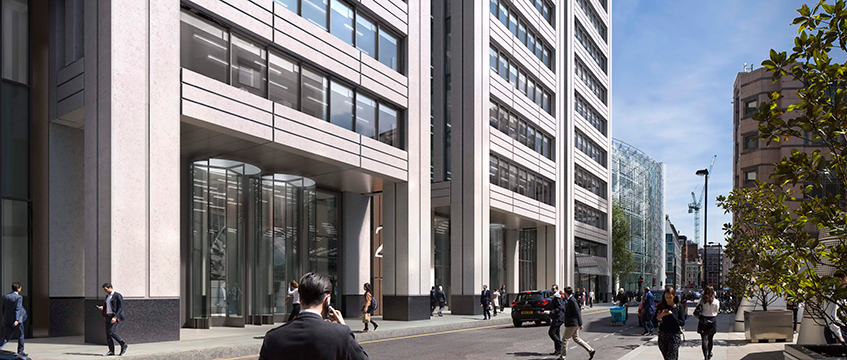Affordable workspace obligations for developers are increasingly being enforced in central London as boroughs strengthen planning policy in response to new guidance in the London Plan.
The policy, which first emerged in fringe boroughs to protect small businesses from fast-rising rents during the Shoreditch boom, stipulates a percentage of space in new office developments should be provided at below market rents, as defined by the relevant local authority.
The requirement is enforced through development plans and section 106 agreements. Central London boroughs, including the City of London Corporation, are currently reviewing their affordable workspace policy following the publication in November of new guidance in the draft London Plan, which gave way for local authorities in the “central activity zone” to enforce the planning stipulation if they think it is appropriate.
“I think people are worried because there were certain assurances that were given from the Greater London Authority that they didn’t see this as being applicable within the central activity zone (which roughly overlaps with Zone 1), and what has happened through the London Plan is it gives local authorities the opportunity to introduce it,” says Will Lingard, senior director in CBRE’s London planning team.
What is affordable?
The definition of “affordable” varies in different boroughs. In Islington, it is defined as a minimum reduction of 20% of comparable market rates but rents could be far lower depending on the location and asset. Some 5% of new office space must be provided at the stipulated “affordable” rent. In some cases this has meant leasing the space to an affordable serviced office provider for 10 years at a peppercorn rent.
Tower Hamlets is currently developing its affordable/workspace policy but a strategy document published in June 2017 indicated “affordable” would be defined as rents which are “substantially below market levels” and “no less than 10% below prevailing market rates”.
The City of London Corporation’s consultation with developers asks whether affordable workspace targets should be enforced, how “affordable” should be defined, or whether the policy should remain more flexible and left to market conditions.
The Local Plan subcommittee is due to report its response to the draft London Plan to the planning and transportation committee in February.
Further consultation on the City’s affordable workspace policy, which will be adopted via its updated Local Plan, will take place before feedback is reported to the planning committee around May-June.
Research by Savills’ serviced office space advisory service Workthere has found that average monthly desk costs started at £350 in London Fields/Hackney and Vauxhall; with the cost of workspace remaining the most important factor for choosing an office.
Affordable vs flexible
The City of London subcommittee’s recommendations will also include policy to strengthen the provision of flexible workspace. Christopher Hayward, chairman of the planning and transportation committee, says: “We will aim to ensure in those local plan discussions that any new floorspace is flexible so that is suits the needs of SMEs and we will intensify that undoubtedly.” Some 98.7% of City firms are now SMEs, with fewer than 250 employees, according to ONS data.
In a separate policy to encourage low cost workspace, the London Plan stipulates that development proposals for B1 offices (all workspace other than offices for financial and professional services) should consider scope for a proportion of flexible workspace suitable for micro, small and medium-sized enterprises where the total floorspace is greater than 2,500 sq m (27,000 sq ft).
“There is often a bit of confusion between what they call ‘SME policies’ and affordable policies which can get conflated,” says David Ainsworth, chief executive of CORE and vice president of the City Property Association. “Most forward-thinking developers do consider an element of flexible space within the estate; either where they are operating their own [flexible workspace provider] like British Land with Storey or where they are working with third parties like The Office Group.”
He adds: “Flexibility on lease lengths means that it’s by de facto affordable. Whereas the definition of “affordable” is virtually impossible to put your finger on and that’s where the danger lies.”
Shooting yourself in the foot
Developers are concerned that a prescriptive affordable workspace policy could threaten viability and be unproductive. Ainsworth says: “The City is conscious that they need to make sure there’s a diversity of offer in the city. However, doing that by requiring that one or two floors of a building have to be rented at a certain level is not necessarily the most effective way to do it in these prime locations.”
He adds: “If the City had said that in relation to 21 Moorfields, EC2 [where Deutsche Bank agreed a 564,000 sq ft pre-let for the entire building last year], that Deutsche Bank has to have 5% of the floorspace as a peppercorn rent, that would be a test. It would be mad to try to do that.”
The prolific uptake by serviced occupiers in the past year has already made rents for smaller floorplates more competitive due to the increased competition. Heavier affordable workspace contributions could also impact the contributions made by developers towards affordable housing funds through s106 agreements.
“The more you bring small businesses into the centre, the less you have the really positive regenerative effect on areas outside the centre if you don’t get the lunchtime spend in Tottenham, for example,” says CBRE’s Lingard. “Taking all of those creatives and bringing them into the centre would be pointless.”
Is it viable?
Lingard adds: “I think it’s a very attractive sounding policy, I think it just needs to be qualified and it needs to be much more detail about it viability and implications.”
Mark Ridley, commercial director at Stanhope, which has developed offices with affordable workspace provision in Islington and Camden, says: “It’s another tax basically, it’s another thing that plays into land value. If you’re looking to buy something and it’s a clear policy then you just adjust your appraisal.”
Research by EG has found that for a 100,000 sq ft scheme being sold off a 6% yield, rented at £60 per sq ft, a 10% affordable commitment at 70% of market rent could reduce end value by £3m and development profit by 20%.
In central boroughs such as Westminster, which has ambitious employment growth targets, a strict affordable workspace policy would appear counterproductive to encouraging office development. A policy that looks good at first glance could have damaging unintended consequences.
Affordable workspaces agreed last year in central London
Anglo American HQ, 17 Charterhouse Street, EC1: As part of planning consent achieved by Anglo American and DeBeers in December for a major refurbishment and 43,000 sq ft extension of their HQ, the developer must provide payment in lieu of affordable jewellery workspace.
British Land’s 1 Triton Square, Euston, NW1: The 311,800 sq ft building, which has been fully pre-let by Dentsu Aegis, will provide 10,000 sq ft of affordable workspace, defined as “shared workspace for small businesses and individuals to work and develop ideas”.
CORE and Old Park Lane Management’s 27-storey 20 Ropemaker Street, EC2: The development partners have agreed to provide dedicated SME/affordable workspace as part of their planning consent for the 683,583 sq ft office scheme. The specific details are currently subject to a section 106 negotiation.
To send feedback, e-mail Louisa.Clarence-Smith@egi.co.uk or tweet @LouisaClarence or @estatesgazette













